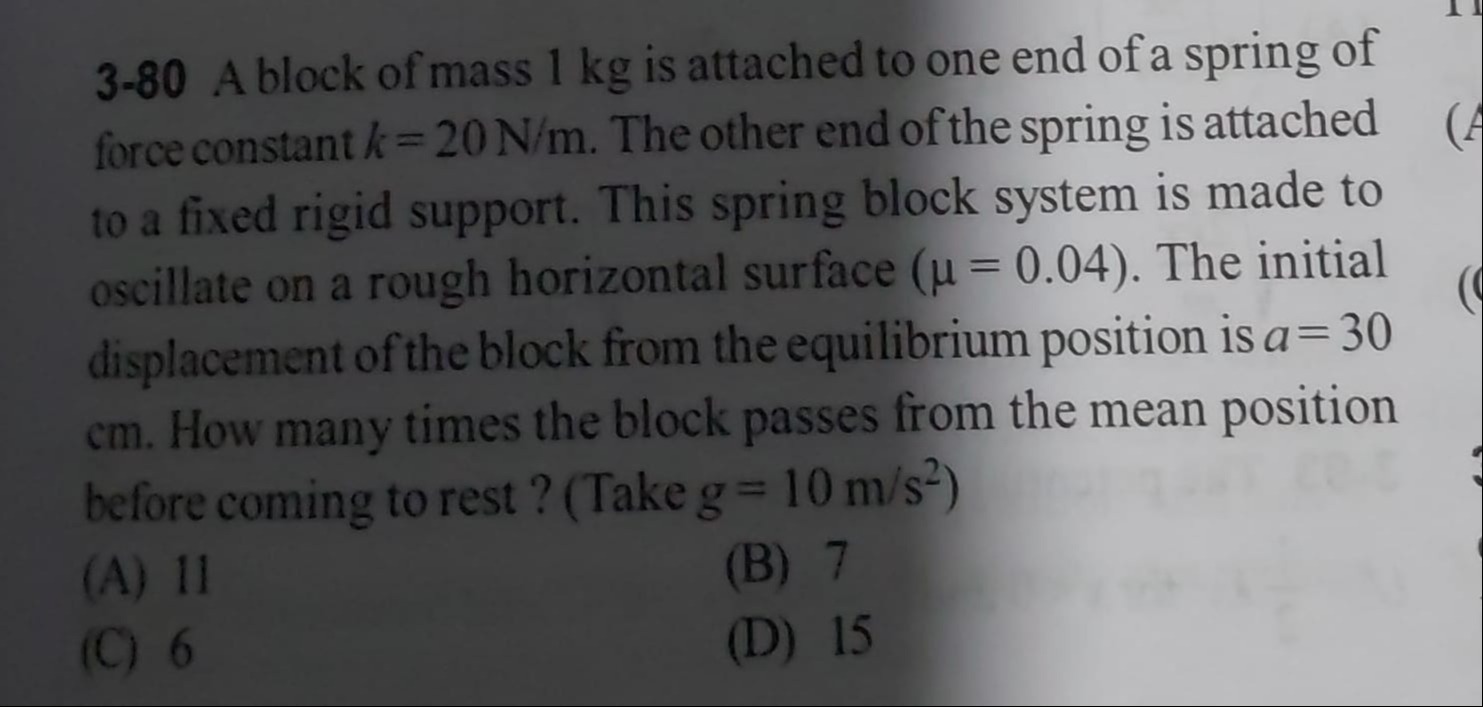Question
Question: A block of mass 1 kg is attached to one end of a spring of force constant k = 20 N/m. The other end ...
A block of mass 1 kg is attached to one end of a spring of force constant k = 20 N/m. The other end of the spring is attached to a fixed rigid support. This spring block system is made to oscillate on a rough horizontal surface (µ = 0.04). The initial displacement of the block from the equilibrium position is a = 30 cm. How many times the block passes from the mean position before coming to rest? (Take g = 10 m/s²)

11
6
7
15
7
Solution
The kinetic friction force is calculated as fk=μN=μmg. Given m=1 kg, g=10 m/s², and μ=0.04, the friction force is fk=0.04×1×10=0.4 N.
The amplitude of oscillation decreases by a constant amount ΔA in each half-oscillation, given by ΔA=k2fk. With k=20 N/m, ΔA=202×0.4=200.8=0.04 m.
The initial amplitude is A0=30 cm =0.3 m. The number of half-oscillations until the block comes to rest can be estimated by finding when the amplitude becomes less than or equal to ΔA. The number of passes through the mean position is often approximated by ⌊ΔAA0⌋.
Number of passes ≈⌊0.04 m0.3 m⌋=⌊7.5⌋=7.
This means the block completes 7 half-oscillations and is in the process of the 8th half-oscillation when it stops. Each completed half-oscillation involves one pass through the mean position. Following the convention that the number of passes is ⌊A0/ΔA⌋, the block passes the mean position 7 times.
